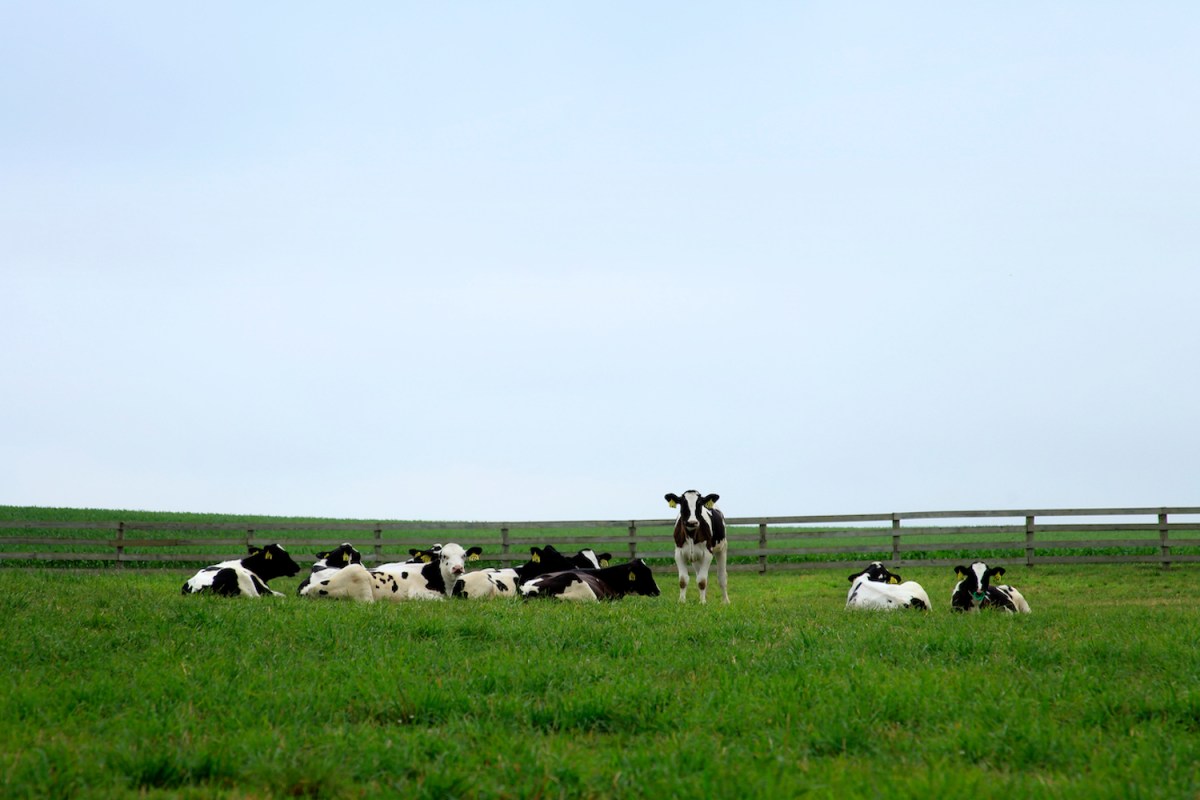It’s been a busy week of worrisome environmental and climate news, between the wildfires in Canada, the resulting smoke impacting much of the northeast and the Arctic potentially having iceless summers by 2030. And in more climate-related news, a recent article from Inside Climate News shared news that conservation programs led by the Department of Agriculture are giving millions of dollars to farms that are worsening climate change.
The article shared a report from the Institute for Agriculture and Trade Policy detailing that in 2022, the Environmental Quality Incentives Program (EQIP) — one of the biggest conservation programs in the USDA — gave its highest-priced grants to seven California dairy farms. It’s the country’s biggest dairy-producing state, according to the article.
The grants were to help farms construct “anaerobic digesters,” which essentially collect methane gas from manure. The grants were nearly $300,000 each, according to the article, and over $100 million was given to farms across the country for the construction of these digesters. The methane collected can turn to “biogas” with this infrastructure and be used to heat houses and buildings, so it makes sense these were given to farms with concentrated animal feeding operations.
Chemical Companies Agree to Pay $1.2B Over Forever Chemical Lawsuits
It’s unlikely to be the last settlement of its kindHowever, critics shared their concerns over giving millions to construct digesters as they incentivized expanding dairy and cattle operations, which would increase the amount of agricultural methane from this country’s largest source — cow burps, which are responsible for 40% of methane emissions.
“When we look at the list of climate-smart practices there are a lot of things that we support,” said Michael Happ, an IATP researcher who authored the report, to Inside Climate News. “Digesters are listed as a climate smart practice and that’s something we strongly disagree with.”
The Environmental Working Group, an American nonprofit that specializes in research and advocacy in agricultural subsidiaries, found out that between 2017-2020, the USDA gave $7 billion to farmers through conservation programs. But only a small percentage of farmers who received the funding actually had impactful climate benefits, according to the article. Ten farming practices in total received half of the overall funding, and out of those 10 practices, only one had any climate benefit at all.
“That means there are tons of great conservation practices that are getting almost no money,” said Anne Schechinger, a director with the group and author of the study, to Inside Climate News. “And yet we’re spending millions of dollars on things that most people would not consider to be conservation.”
In a comment to Inside Climate News, the USDA announced the Partnerships for Climate-Smart Commodities last year with $325 million, which brings the USDA’s investment for climate-smart agriculture to over $3 billion. Hopefully this means for more productive and positive climate news in the near future — especially for agriculture workers and local farmers.
Thanks for reading InsideHook. Sign up for our daily newsletter and be in the know.


















